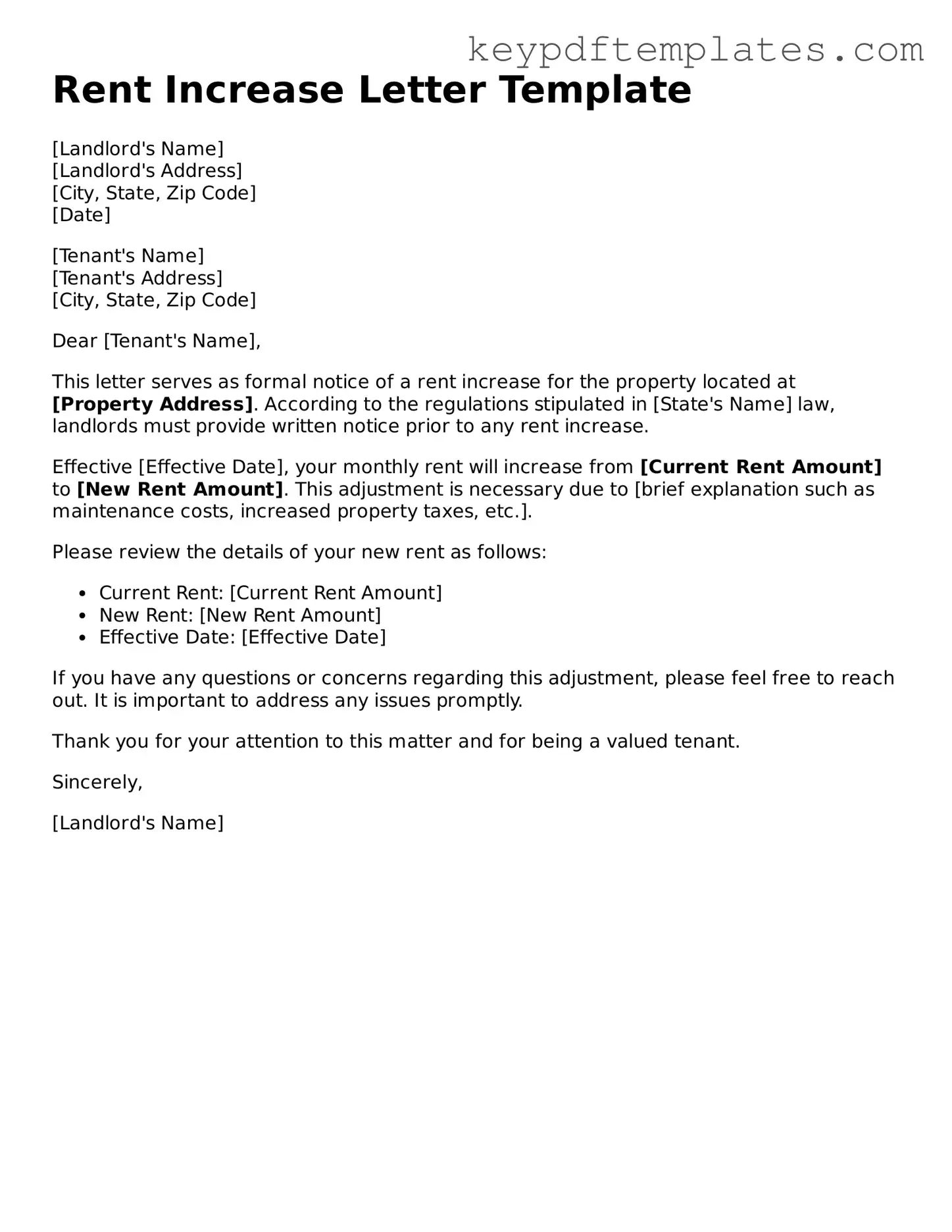Printable Rent Increase Letter Template
The Rent Increase Letter form is a written notification that landlords use to inform tenants about an upcoming increase in rent. This document outlines the new rental amount and the effective date of the change, ensuring that tenants have adequate notice. Understanding this form is essential for both landlords and tenants to navigate rental agreements effectively.
Modify Document Online
